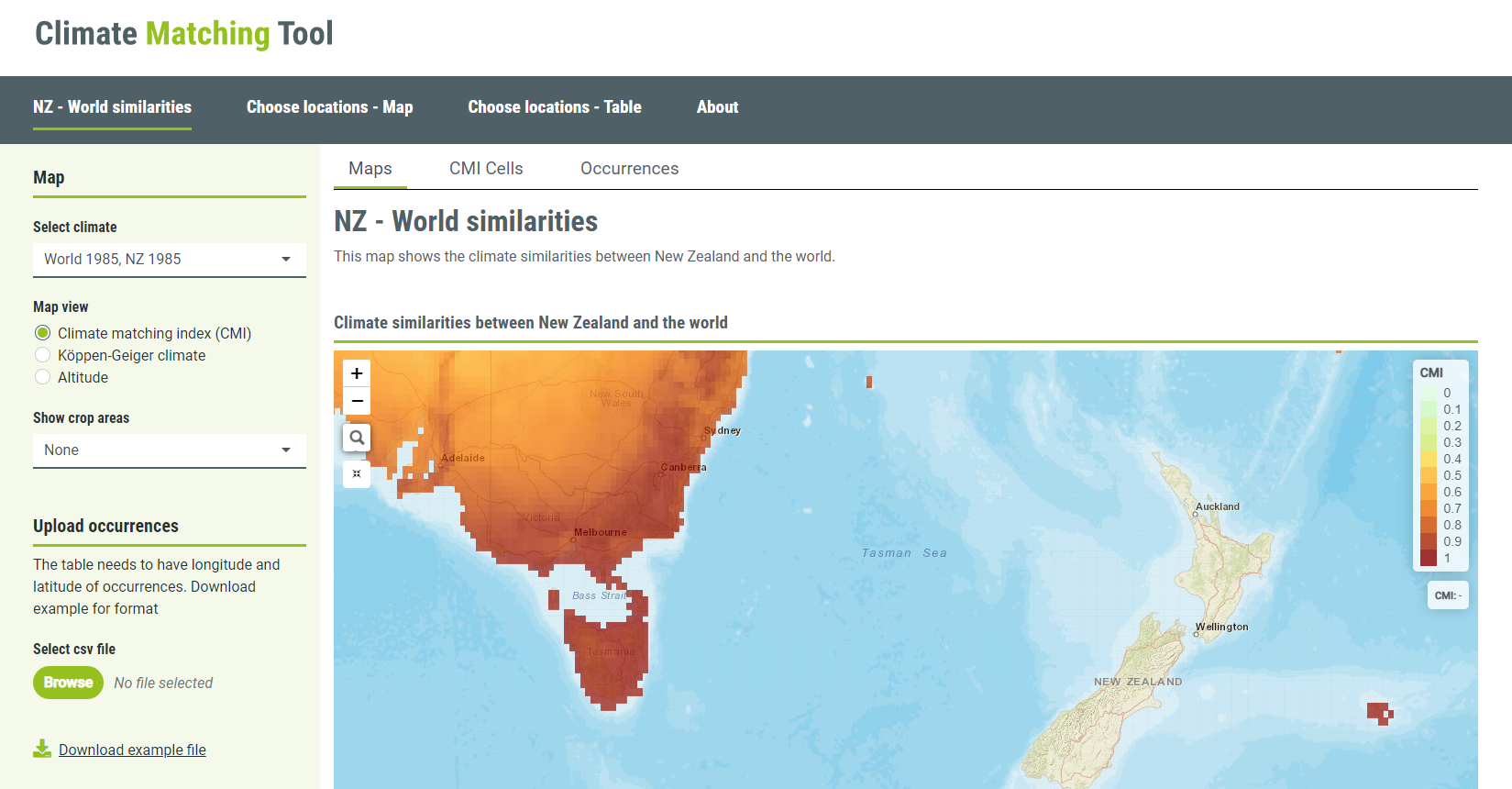Seen something unusual? MAKE A REPORT
Seen something unusual? MAKE A REPORT

An app is now available that matches areas in New Zealand with other parts of the world that have a similar climate, providing a view of where future pest incursions could originate, enabling more effective planning and preventative measures.
The tool is based on the premise that pests which occur in regions and countries with climatic conditions similar to New Zealand are more likely to establish here, either now or under future climates.
KVH has a keen interest in this app as a key focus of ours is to understand the risk of pests and pathogens offshore to our industry here in New Zealand.
An important part of risk assessment includes understanding the entry and establishment potential of any threats, based on our climatic suitability, both current and future. We know climate change can impact biosecurity in a range of ways - namely, invasive pests and diseases will increasingly threaten our borders as the changing climate will bring about changes in global food production, trade routes, and overseas pest distributions, changing the possible threat levels from different countries. So, this app provides us with a valuable tool to predict these changes and target future trends.
Early indications from users including the Ministry for Primary Industries (MPI) have been positive and the app is already helping identify risk pathways for biosecurity purposes.
There are also further developments in the pipeline. In the next stage, the app will provide researchers and agencies with a relatively quick, accessible means of sketching climatic risk profiles, compared to current more complex ones that may provide higher levels and layers of data, but are harder and take much longer to operate.
The modelling app was developed by a senior scientist at AgResearch and researcher for Better Border Biosecurity (B3), in collaboration with MPI.
Click here to find out more about how the Climate Matching Tool works and to access it.

KVH investigates reports of unusual symptoms to identify and manage any biosecurity risks.
The KVH portal is now the Zespri Weather & Disease Portal. Access all the weather tools you're familiar with.
